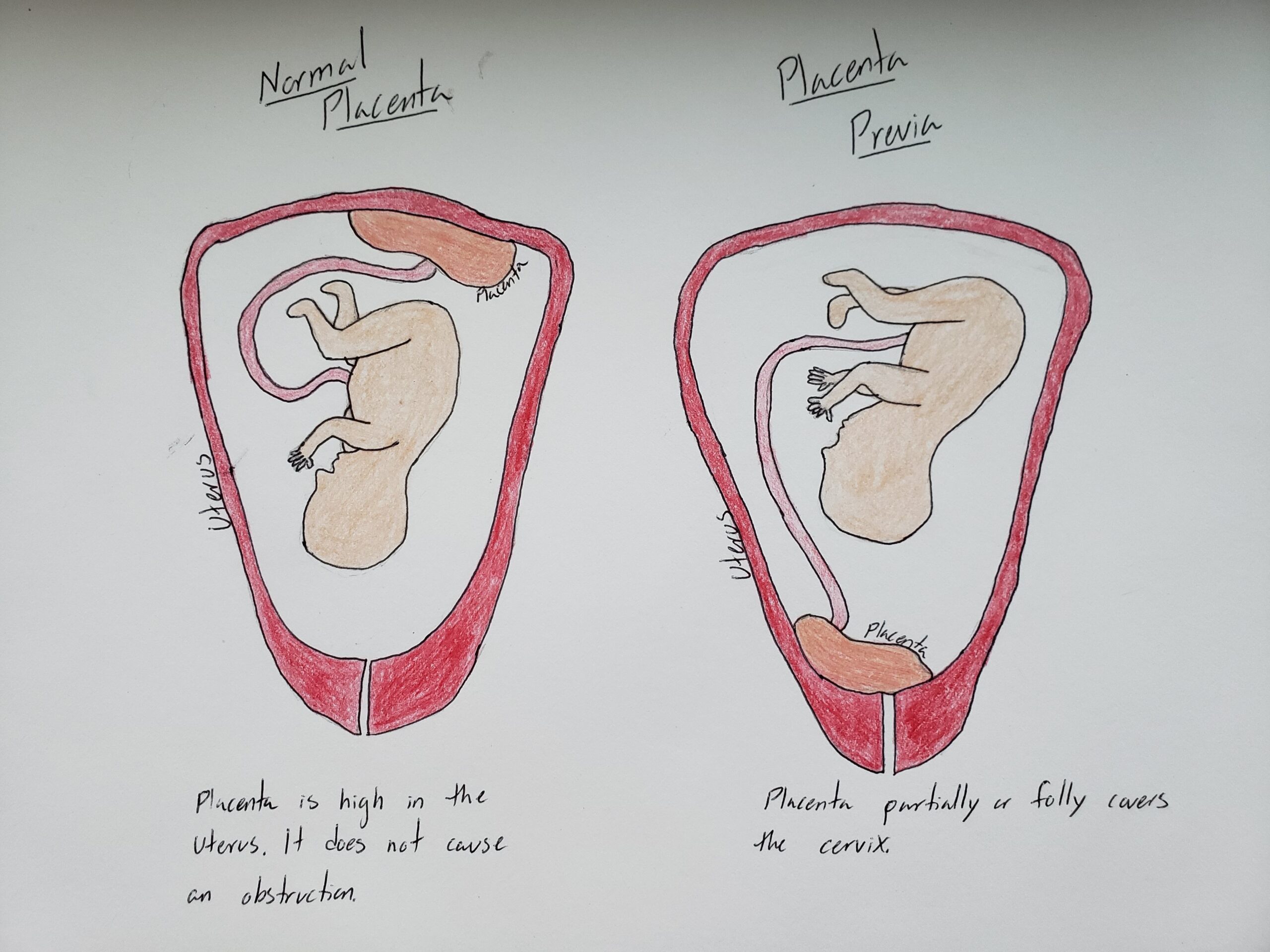The objective that I’ll be covering is: Describe placental formation and function.

There are many factors that make pregnancy in humans unique compared to other animals. Humans have long gestation periods and fetuses that grow very large compared to their mother’s body size. Childbirth is unusually painful, and the resulting newborns are very helpless compared to infants in other species. All of these things are the evolutionary byproduct of the abilities that launched humans into our current place in the world ecosystem. But our big brains and upright bodies also make human pregnancy uniquely dangerous. Lots of things can go wrong during pregnancy and childbirth. One such condition is placenta previa.
The placenta is a temporary organ that is formed in the uterine wall during pregnancy and it is attached to the growing fetus through the umbilical cord. The placenta provides nutrients and oxygen to the fetus and it is vital in its development. It is typically formed about three months into pregnancy. The placenta is also responsible for secreting estrogen and progesterone to inhibit uterine motility and prepare the body for lactation. During labor, the placenta causes a spike in estrogen to prepare for contractions and the dilation of the cervix. In a healthy delivery, the placenta passes through the cervix after fetus and leaves the body.
The placenta implants on the wall of the uterus. But if it implants too low, then the placenta may partially or fully cover the cervix. This condition is known as placenta previa. Placenta previa prevents the fetus from passing safely through the cervix. Therefore placenta previa can prevent a vaginal birth from being possible, or increase the risks of childbirth. This condition can be diagnosed early in the pregnancy. Symptoms include bleeding during the second or third trimester, and the condition can also be seen on an ultrasound or sonography during the first and second trimester. The most common treatment is to deliver using a cesarean section. When a patient with placenta previa attempts to deliver vaginally, the risk of hemorrhaging is high. Hemorrhaging is extreme bleeding, and can be fatal.
The reason why placenta previa occurs is not known, but there are certain factors that increase risk. These include prior placenta previa, age, drug use, and a history of cesarean sections. Uterine scarring, such as that caused by endometriosis, can also increase the risk of developing placenta previa.
Today, it is very possible to diagnose and treat placenta previa. Prenatal care, including the technology used to identify the condition, is available for most women in developed countries. Cesarean sections are a common and fairly safe procedure. But without access to these medical advances, placenta previa is a dangerous condition for both the mother and child. When it is undiagnosed and untreated, an emergency and possible preterm cesarean is necessary which can be dangerous for the fetus. The perinatal mortality rate for placenta previa cases was nearly 50% in Ethiopia between 2006 and 20012 (Berhan 2014).
Childbirth has always been a dangerous procedure for humans. Modern healthcare advances can reduce maternal and perinatal mortality significantly, but these opportunities are not available to all mothers. Placenta previa, while treatable, remains a significant and dangerous condition in pregnancy.

The objective covered in this project is to describe placental formation and function. I think that the art presented represents the topic well and could tell a person what placenta previa is just by looking at the image. I think that the way you decided to use your art as a visual aid about the differences in healthy pregnancies versus pregnancies with placenta previa was a smart choice. In summary, the placenta is a temporary organ that develops on the wall of the uterus 3 months after conception. The placenta is vital to the fetus because t provides nutrients and oxygen, two key components to a healthy fetus. The placenta increases the level of estrogen and progesterone in your body during labor. Placenta Previa is a condition caused by the development of the placenta too low to where it either develops slightly over the cervix or entirely over the cervix. This condition can be diagnosed with the use of an ultrasound, but the cause is unknown. Placenta Previa can cause difficulties with natural vaginal delivery and may cause childbirth risks. Due to this, the most common form of treatment is to deliver the fetus by a cesarian section. Without access to these procedures, placenta previa can be threatening to both mother and fetus. In these cases, preterm (early) cesarian sections may have to be performed, which increases risks for both mother and fetus. I found the statistic interesting: “The perinatal mortality rate for placenta previa cases was nearly 50% in Ethiopia between 2006 and 2012” (Berhan 2014).